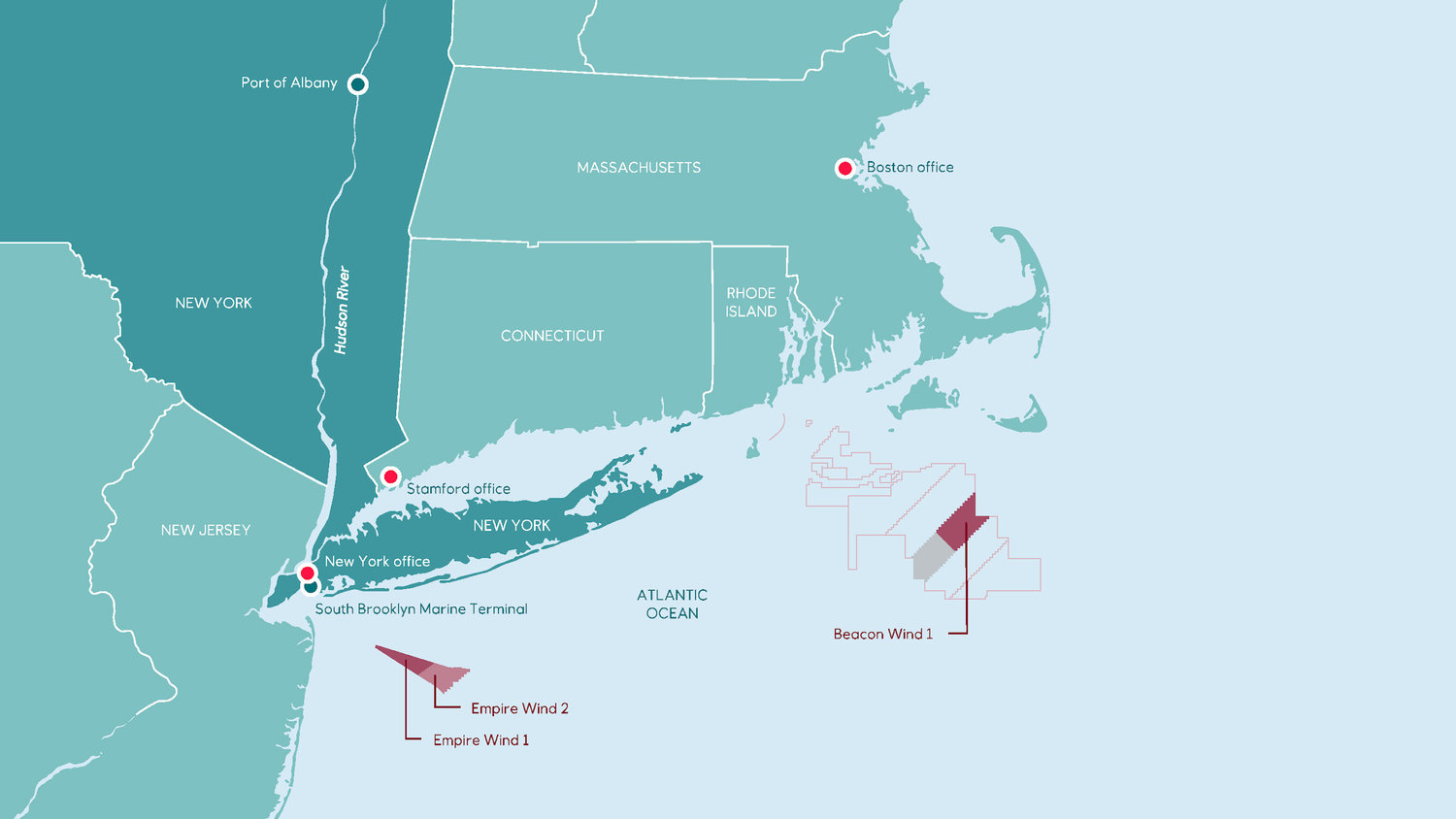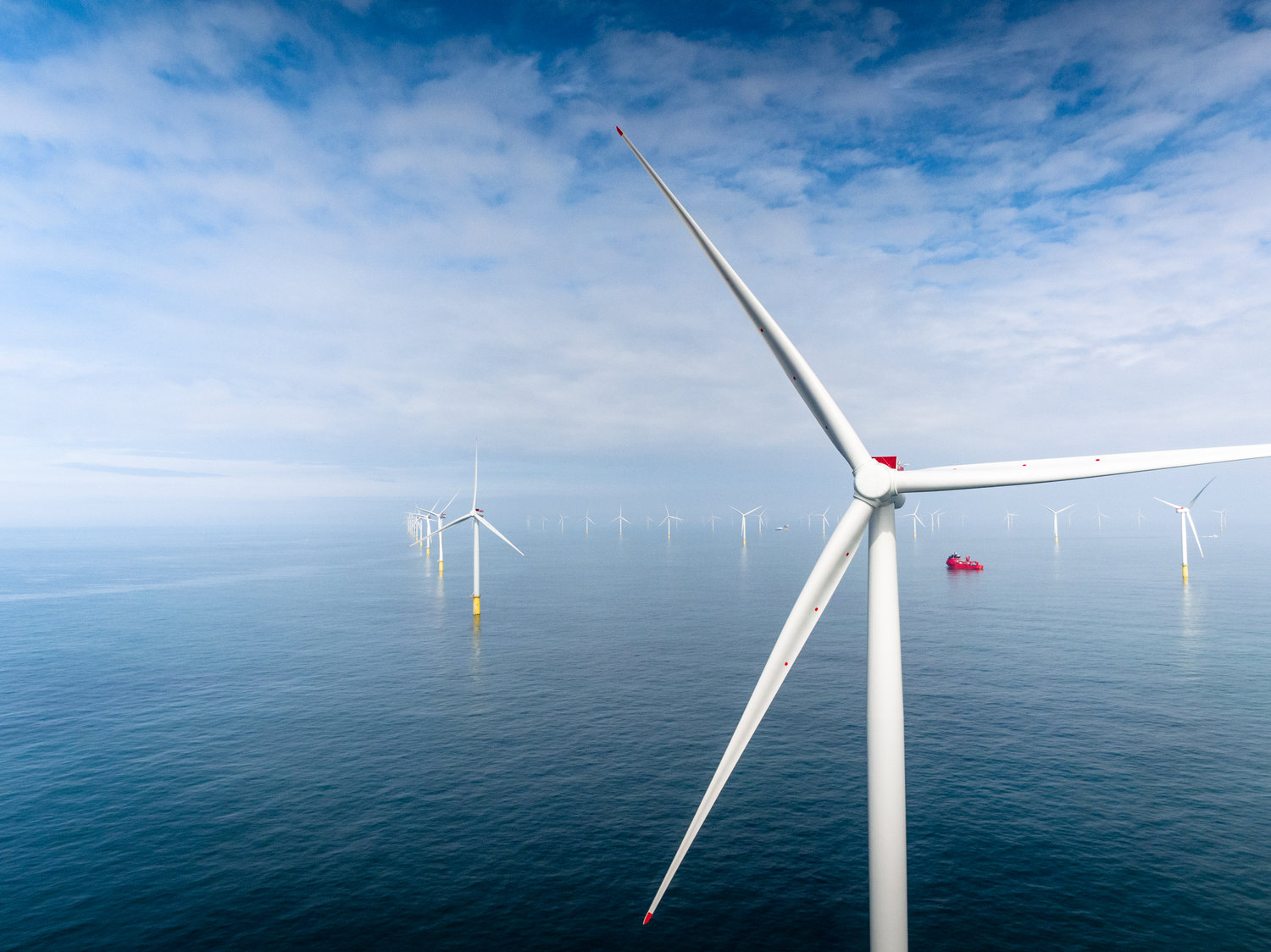Sunday, June 16, 2024
Review process for Island Park Empire Wind 2 project is underway
The planning for Equinor’s Empire Wind 2 project, a wind energy proposal to install 147 turbines in an 80,000-acre area about 20 miles off the coast of Long Beach, which would involve the use of a substation in Island Park and connect with the power grid in Oceanside, is progressing smoothly.
Equinor filed an Article VII application for the work on June 17, to have the New York State Public Service Commission review its proposal to construct new transmission infrastructure. The application process evaluates the need for the project, ensures that it meets environmental standards and gauges public involvement.
The cables for the turbines would be routed into the City of Long Beach, connect with the Island Park substation, run through an LIRR easement and connect to the grid in Oceanside. The substation would be built at the site of Pop’s Seafood Shack and Grill, on Railroad Place in Island Park. Ana Fisyak, Equinor’s community engagement manager, said that the company has purchased the restaurant, which will remain open for one more season before closing at the end of this year.
Fisyak explained that the Railroad Place site is the ideal location for a substation because it will minimize the impact on the community and create an efficient route to the electrical grid.
Empire Wind 2 is one of three Equinor wind-energy projects in the works in the metropolitan area. Empire Wind 1, which will connect into Brooklyn, will power the New York City grid, and Beacon Wind, 50 miles off the coast of Montauk, will connect into Astoria, Queens. Fisyak said that in total, the projects will provide 3.3 billion gigawatts of power, enough to power 2 million homes and help New York state reach its goal of 9 gigawatts by 2035.
“This is a collective investment of $2.5 billion in economic development commitments to New York state,” Fisyak said. “The project also set aside a substantial amount of funding for workforce development innovation and community and environmental benefits.”
She added that New York state offers unlimited potential for offshore wind generation. “Our wind speeds and strengths are unprecedented globally, so there’s a lot to take advantage of in the New York Bight,” Fisyak said. “It blows exactly when we need it and is close to the population centers of New York City and Long Island. It blows best in the morning and evening, which are the peak times for energy uses, exactly when and where we need it.”
Equinor she said, anticipates that the increased use of wind power will bring not only economic, but health benefits. “It will have a collective benefit to air quality and avoidable hospitalizations,” Fisyak said. “That’s equivalent to removing 1.3 million cars annually.”
Now that the project’s Article VII application is filed, it has kicked off the permitting process.
The company has also published public notices in local papers including the Herald, Newsday and the Rockaway Wave, sent copies of its application to elected officials and public libraries and sent notices to property owners along the route to inform them of the status of the project.
Still to follow are public hearings as well as evidentiary hearings overseen by an administrative law judge, all leading to a final decision on certification by the Public Service Commission. If the project is approved, there will various environmental management filings and construction and right-of-way plans. So it’s no surprise that construction would likely not begin before 2024. “It’s a very long, multi-tiered process,” Fisyak said.
She added that, despite the fact that the process is in its early stages, anticipation is building, as evidenced by the response at a May 26 community meeting at Island Park Village Hall. “People were really receptive and excited about the project,” Fisyak said. “There’s still a lot of questions about the community benefits. However, we’re still really, really early on in the process, and we hear that the community wants to be involved and wants it to be a transparent process, and we want to make sure we’re delivering on that.”
One major concern is about the impact of construction of such a large project on boat traffic. “Early and often communication is key in ensuring that they’re aware if we’re going to be in the area well in advance of us being there,” Fisyak said. “We will be contracting fishing vessels as ‘Safety vessels’ during construction, to communicate with other mariners at sea to notify them of the construction activities. There will also be safety zones around the work area as well, where mariners will be prohibited during construction for safety reasons, of course. After construction, the area will remain open to transiting and fishing.”
HELP SUPPORT LOCAL JOURNALISM
The worldwide pandemic has threatened many of the businesses you rely on every day, but don’t let it take away your source for local news. Now more than ever, we need your help to ensure nothing but the best in hyperlocal community journalism comes straight to you. Consider supporting the Herald with a small donation. It can be a one-time, or a monthly contribution, to help ensure we’re here through this crisis. To donate or for more information, click here.
Sponsored content
Other items that may interest you









